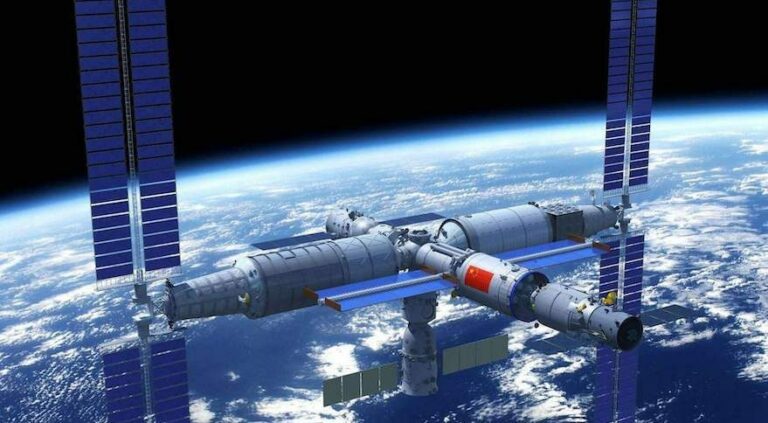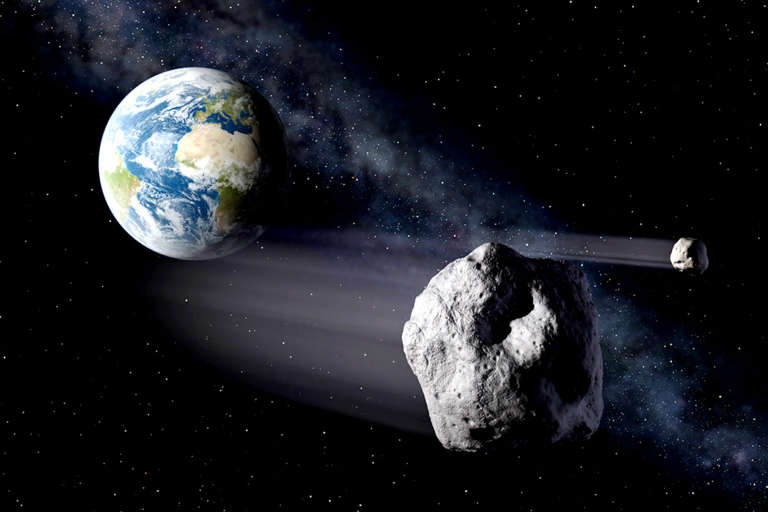Andrew Jones • Jun 02, 2022
China is getting serious about planetary defense
China’s space capabilities have grown tremendously over the past decade, with lunar landings and sample returns, its own version of GPS, space science missions, a new, under-construction space station, and a first interplanetary expedition — Tianwen-1 — to Mars.
In some areas, however, the country is still only just getting started. At a press conference on April 24, marking China’s national “space day,” Wu Yanhua, deputy director of the China National Space Administration (CNSA) announced (Chinese) that the agency would launch its first asteroid deflection test in 2025 or 2026.
The announcement did not come out of the blue. At the same time, it is a first, clear statement that China wants to develop not just the capability to alter the orbit of an asteroid but an entire planetary defense system.
While little is known about China’s plans, there are clues as to what capabilities and technologies China is considering developing.
China’s planetary defense beginnings
In October of last year, the first China Planetary Defense Conference was held, in which an array of disciplines, concepts, capabilities, and techniques — including radar astronomy, monitoring, impact simulation, disaster scenarios, volatiles, legal and policy issues, meteorite collection, and deflection technologies — were reviewed, reported and discussed.
More notably, a passage in the once-every-five-years Chinese government white paper on space released in January stated that China will “study plans for building a near-Earth object defense system and increase the capacity of near-Earth object monitoring, cataloging, early warning, and response.”

Asteroid deflection plans
The asteroid deflection mission profile remains under wraps for now, but there are some clues about what is in store.
Chinese teams had earlier released proposals for kinetic impactors. The “Assembled Kinetic Impactor” (AKI) would use the Long March 5, China’s largest and most powerful rocket, and see the spacecraft remain attached to the rocket's upper stage for a more effective impact into a threatening planetary body.
A more challenging concept is the “Enhanced Asteroid Deflector.” Describing missions like NASA’s DART (Double Asteroid Redirection Test) using a spacecraft to hit a large asteroid as similar to “using an egg to hit a rock,” Li Mingtao, a professor at the National Space Science Center in Beijing, proposed collecting rocks from a near-Earth asteroid before then heading to the targeted potentially hazardous asteroid with the extra mass to “hit rock with rock”.
The technology readiness level of the latter mission — which would also lend itself to commercial asteroid mining — is low, so the upcoming Chinese mission is likely to be a more “traditional” kinetic impactor. It will have some differences from the DART mission, in which a spacecraft will enter the asteroid binary system Didymos and collide with a moonlet called Dimorphos.
Wu did not reveal a target for the mission, but this is another area in which China will be investing. New capabilities for spotting and tracking asteroids will be developed, as well as assessing risk, using software to run asteroid impact simulations, and preparing to take action if an asteroid is found to be on a collision course with Earth.
Detecting and monitoring dangerous asteroids
Detecting and tracking potentially threatening asteroids is an important area in which China will need to make big strides to contribute.
Right now the United States is the clear leader in tracking asteroids, accounting for more than 98 percent of the at least 1,500 new near-Earth objects (NEOs) discovered each year. China’s relatively modest observational capacities are run by the Purple Mountain Observatory (PMO). These consist of the NEO Survey Telescope near Xuyi, in Jiangsu province, with a number of smaller telescopes for follow-up observations at different PMO stations around the country.
Ye Quanzhi, an astronomer and research scientist at the University of Maryland, notes that there are proposals for new facilities, while several amateur astronomers are involved in NEO observation in China. One new facility now under construction is the 2.5-meter "Wide Field Survey Telescope" in Lenghu in the northwestern province of Qinghai, overseen and operated by PMO and the University of Science and Technology of China.

Hunting for NEOs from space?
China is also considering establishing space-based capabilities to bring a new dimension to tracking NEOs.
The constellation of heterogeneous wide-field NEO surveyors — or CROWN — proposal would send six to eight microsatellites, each with a telescope with a 30 centimeter (11.8 inch) aperture and 10 square-degree fields of view, into heliocentric orbits inside the orbit of Venus. Together with a mother satellite with a high-resolution spectroscopic telescope, CROWN would aim to detect 90% of NEOs (that is, any small body, comet or asteroid which passes within 1.3 astronomical units of the Sun) of as small as 10 meters (33 feet) within three to five years. Proposed launch is for December 2024, coming online in 2026-27 for a five-year mission.
Another recent proposal would send two telescopes into Earth-leading heliocentric orbit, similar to the use of an Earth-trailing orbit pioneered by Spitzer, to cover the blind zone around the Sun suffered by ground-based telescopes and warn of asteroids approaching Earth from the sunward direction.
There is also commercial activity in China that could make contributions. Origin Space, a space resources startup, launched a small optical and UV telescope into low Earth orbit in 2021 to monitor NEOs and plans to launch the follow-up Yangwang-2 (“look up-2”) telescope later this year. The emphasis is very different, however. Instead of detecting threats, Origin Space wants to create a "treasure map" of potential space resources.
Global collaboration
China’s potential new capabilities could bring a lot to international efforts to survey NEOs, and possibly provide a rare arena for further cooperation.
“The U.S. is unquestionably the leader in planetary defense but strong international collaboration or at least communication is vital for tracking and defending against NEOs,” Ye said.
“There are many examples already. Even though the U.S. operates most of the NEO survey telescopes it still significantly relies on international partners to track their discovered NEOs or sometimes host their telescopes, for instance in Chile, South Africa and Australia, and exchange of expertise between countries is common.
“There's also little gain for everyone to compete on this front because we are facing an extraterrestrial threat. So I think China's potential emergence as a new player can open up possibilities for collaborations.”
Although exactly what China’s planetary defense system will look like is currently unknown, its development will undoubtedly bring new possibilities. To ensure that the global threat posed by near-Earth asteroids takes priority over geopolitical concerns, dialogue between key actors will be essential.
Support our core enterprises
Your support powers our mission to explore worlds, find life, and defend Earth. You make all the difference when you make a gift. Give today!
Donate

 Explore Worlds
Explore Worlds Find Life
Find Life Defend Earth
Defend Earth

